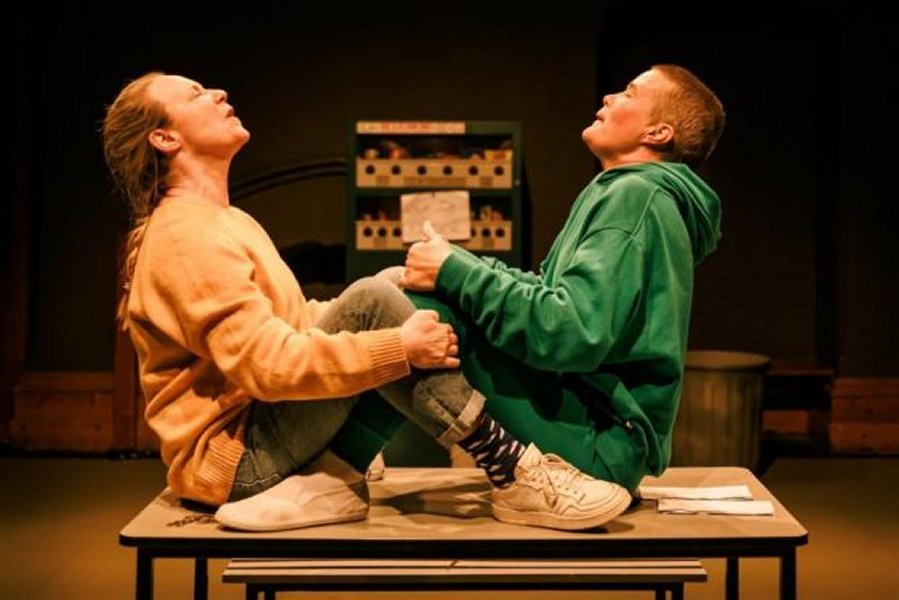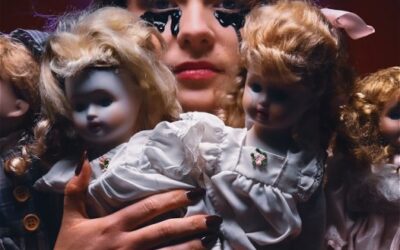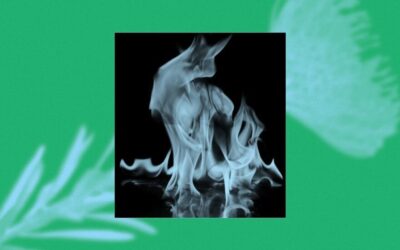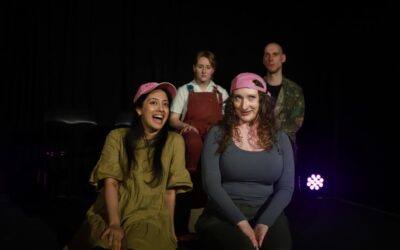By Darby Turnbull
At only the second week of March I find myself being spoilt in terms how my specific theatre appetite is being satiated this year. Between Jasmine Lee-Jones’ Seven Methods of Killing Kylie Jenner, Emmanuelle Mattana’s Trophy Boys, Travis Alabanza/ Kikki Temple’s Burgerz and now the revival of Liv Satchell’s Grief Trilogy there’s a recognition of the need for intimate character-based, exciting interpersonally politically motivated theatre that’s providing performance artists the opportunity to display the breadth of their skills and the audience is rewarded with utterly compelling, nuanced engagement.
It’s so rare that a local, independent plays gets the opportunity for revival, especially those less than ten years old, so I feel immensely privileged to have the opportunity to have been introduced to the first two parts of Liv Satchel and her company of collaborators Grief Trilogy after missing the first two in their initial runs. According to audience members I spoke to who had seen both iterations that whilst they were powerful in their former lives they’re currently playing at a whole other level. That’s the thrill of it, art isn’t created in a vacuum and respect of time and space to develop is an essential and frequently underrepresented factor especially when you have to factor in budget, marketing, competition for attention, routine dismissal of the arts etc.
My sister feather by Liv Satchel (actors Emily Tomlins and Belinda McClory are also credited as co-writers) delves into different emotional terrain than I sat and waited but you were gone too long and let bleeding girls lie to examine grief that as Satchell says ‘has been knitted into your bones’ so lived in that it can be deferred until an interaction forces you to revisit it in conjunction with a past present and future. Egg (Emily Tomlins) is incarcerated in prison and has been for a long time and is visited by her sister Tilly (Belinda McClory) after a decades long estrangement to deliver a pair of letters from their late mother who disappeared when they were young children. The text is so emotionally visceral yet razor sharp in its construction that it achieves that wonderful sensation that plot momentum is completely secondary to subtle revelations of character the longer you spend with them. The respect it shows the audience in their intuition to give us what we need versus what we think will satisfy our curiosity. For example, we never find out what Egg did that resulted in her prison sentence, and we never hear the contents of the letters that were the inciting incidents. The relationship between the two sisters exists within shared trauma, mutual recrimination and an intimate knowledge of their best and worst attributes. Their whole world is evoked in the complete commitment to emotional detail.
Of course the actors excel in this space and it becomes an arena for just how seamlessly they can both convey years of conflicting emotions and breadth of feeling in the most subtle of ways, not just as adults but children. Also, it takes incredible technical commitment to belch on cue. Tomlins from her first entrance shows the effect of years of incarceration on her body; her frame looks like it’s retreated into itself to fit into the narrowest of spaces. McClory is all nervous chatter and micro-condescension but miraculously does not wither under the ferocity of Tomlins’ gaze. It’s a brilliant set up for how brilliantly they’ll convey their individual and joint emotional arcs through the mundanity of language and expression. Extended insights into their childhood in foster care convey tremendous tenderness and shared wonder in their curated worldviews before descending into fatigue and eventual viciousness. Watching them both regress into old patterns as middle-aged women is fearsomely potent. Tomlins will break your heart as she begins to crack and we see the roots of the abandoned child who both doesn’t understand and blames herself for her own abandonment. McClory is ferocious as she wrenches from herself increasing levels of pain, rage and grief whilst gripping as tight as she can to her fiercely won sense of self. Of course she became a social worker, undoubtedly a very good one where there are strict parameters for how deeply you can engage as opposed to deeply intimate connection you have caring for a sibling only a few, albeit significant years younger than herself.
Satchell (assisted by Leigh Lule, who I neglected to credit in the last review) makes compelling use of the raised traverse audience seating, evoking the sensation of watching gladiators fight it out in a pit, with a keen, minute sense for how the use of space creates multilayered opportunities for emotional revelation. James Lew’s Production design once again is stupendous in how intentionally each thing placed on the stage resonates on an individual level. Tilly’s shopping trolley for example becomes one of the most poignant props I’ve seen on stage this year.
John Collopy recreating Jason Crick’s lighting provides some adept and telling contrasts with the tones on the set and in the actors’ costumes by subverting colour associations; the sterile blues and greys of the prison and Egg’s uniform become quite beautiful with time whilst the golden filters of their past paired with Tilly’s yellow sweater gradually go from comforting to stomach turning.
The Grief Trilogy has provided some sublimely inspiring theatrical experiences with culminate next week at La Mama in the grand finale Let bleeding girls lie where Tomlins, McClory and Chanella Macri (who appeared in last week’s instalment) all appear together. Speaking personally, and I imagine for a vast number of the audience, I want the world for these works; tours, awards, film and audio adaptions; so that other audiences can be as lucky as we are to witness them. But if this was just for a moment in time we’re very lucky to have experienced them.
Image: Darren Gill





